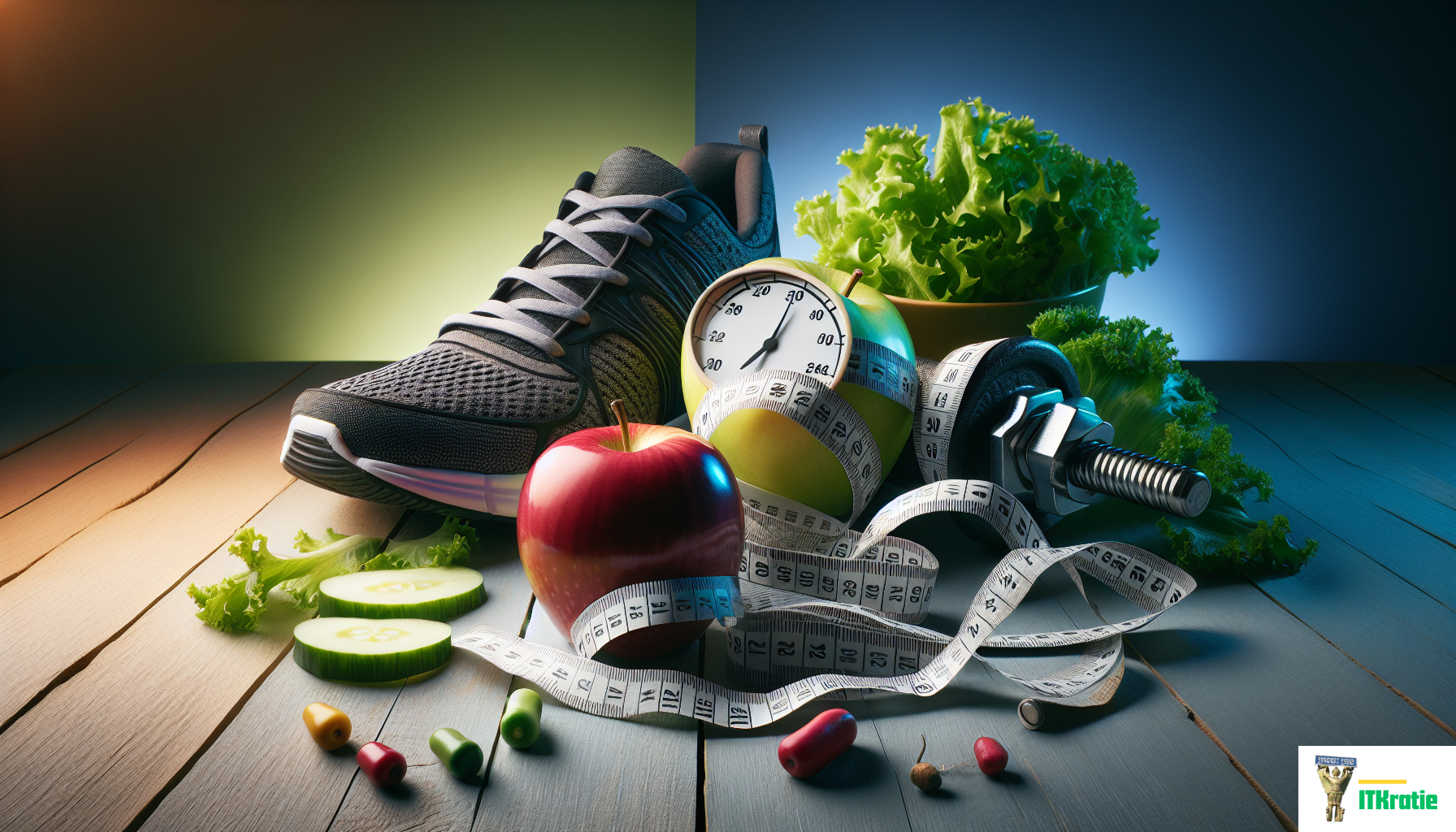If you’re looking for tried and true weight loss strategies that have been vetted by real people, look no further than the vast community on Reddit. From personal anecdotes to evidence-based studies, Reddit holds a treasure trove of valuable advice to help you on your weight loss journey. Whether you’re seeking motivation, practical tips, or simply a support system, this article will guide you through the best weight loss tips shared by Redditors. Get ready to witness the incredible power of online communities as you embark on your path towards a healthier lifestyle.

Healthy Eating Tips
Follow a Balanced Diet
A balanced diet is key to maintaining a healthy weight and overall well-being. It involves consuming a variety of foods from all food groups in appropriate proportions. This means including fruits, vegetables, whole grains, lean proteins, and healthy fats in your meals. By following a balanced diet, you ensure that your body receives all the essential nutrients it needs to function properly.
Practice Portion Control
Portion control plays a crucial role in weight management. It’s easy to overeat when we’re not mindful of how much we’re consuming. To practice portion control, pay attention to serving sizes, use smaller plates and bowls, and avoid eating directly from packaging. Try to listen to your body’s hunger and fullness cues, and stop eating when you feel satisfied, not stuffed. By incorporating portion control into your eating habits, you can avoid unnecessary calorie intake and maintain a healthy weight.
Stay Hydrated
Staying properly hydrated is often underestimated when it comes to weight loss. Drinking an adequate amount of water throughout the day can help control hunger, boost your metabolism, and improve digestion. Make it a habit to carry a water bottle with you wherever you go, and aim to drink at least 8 cups (64 ounces) of water per day. Additionally, you can include other hydrating options such as herbal teas and infused water to add flavor and variety.
Include More Fruits and Vegetables
Fruits and vegetables are packed with essential vitamins, minerals, and fiber while being low in calories. They not only contribute to a healthy diet but also help with weight loss. Aim to include a variety of colorful fruits and vegetables in your meals and snacks. Whether it’s adding berries to your breakfast, having a salad with lunch, or snacking on carrots and hummus in the afternoon, make it a priority to incorporate more fruits and vegetables into your daily routine.
Limit Processed Foods
Processed foods are often high in added sugars, unhealthy fats, and sodium while lacking in essential nutrients. They can hinder weight loss efforts and have negative impacts on your overall health. Try to limit your intake of processed foods such as sugary snacks, fast food, packaged desserts, and sugary beverages. Instead, focus on whole, unprocessed foods that nourish your body and provide sustained energy.
Avoid Skipping Meals
Skipping meals may seem like an effective way to reduce calorie intake, but it can actually do more harm than good. When you skip a meal, your body goes into starvation mode, slowing down your metabolism and making it harder to lose weight. It can also lead to increased hunger, cravings, and overeating later in the day. Instead of skipping meals, aim to have regular, balanced meals throughout the day to keep your metabolism revved up and your energy levels stable.
Monitor Caloric Intake
While counting calories isn’t necessary for everyone, it can be beneficial to have a general idea of your daily caloric intake. This helps you stay mindful of portion sizes and ensure that you’re not consuming more calories than your body needs. There are various online tools and apps that can help you track your calories, but it’s important to remember that quality of food matters just as much as quantity.
Read Food Labels
Reading food labels is an essential skill when it comes to making healthier food choices. Take the time to read and understand the nutrition facts panel, ingredient list, and serving size information on packaged foods. Pay attention to the amount of added sugars, unhealthy fats, and sodium in the product. Look for products with simple, whole food ingredients and be mindful of portion sizes.
Meal Prepping
Meal prepping is a fantastic way to set yourself up for success with healthy eating. By preparing your meals in advance, you can control portion sizes, choose nutritious ingredients, and save time during busy weekdays. Set aside some time each week to plan your meals, make a detailed grocery list, and do the necessary preparation such as chopping vegetables or cooking proteins. Having healthy meals readily available makes it easier to resist temptations and make mindful choices throughout the week.
Effective Exercise Strategies
Create a Workout Routine
Creating a workout routine is essential for incorporating regular exercise into your lifestyle. It helps you stay consistent, track your progress, and target specific fitness goals. Start by determining how many days per week you can dedicate to exercising and choose activities that you enjoy. Whether it’s going for a run, attending fitness classes, or doing home workouts, find a schedule and routine that works for you. Remember, consistency is key when it comes to reaping the benefits of exercise.
Cardiovascular Exercises
Cardiovascular exercises, also known as cardio or aerobic exercises, are great for burning calories and improving cardiovascular health. They include activities such as jogging, swimming, cycling, dancing, and HIIT workouts. Aim to incorporate at least 150 minutes of moderate-intensity cardio or 75 minutes of vigorous-intensity cardio into your weekly routine. Start by choosing activities that you enjoy and gradually increase the intensity and duration as your fitness level improves.
Strength Training
Strength training is crucial for building lean muscle mass, increasing metabolism, and improving overall strength and bone health. It involves using resistance, such as dumbbells, resistance bands, or your body weight, to challenge your muscles. Aim to incorporate strength training exercises at least two days per week, targeting all major muscle groups. This can be done through exercises such as squats, lunges, push-ups, and bicep curls. Consider working with a fitness professional to learn proper form and technique.
High-Intensity Interval Training (HIIT)
HIIT workouts have gained popularity due to their time efficiency and effectiveness for weight loss. HIIT involves alternating between short bursts of intense exercise and periods of rest or lower intensity. This type of workout increases your heart rate, burns more calories in less time, and boosts metabolism for hours after the workout. Incorporate HIIT workouts into your routine by adding intervals of intense exercises such as burpees, jump squats, or mountain climbers.
Incorporate Weightlifting
Weightlifting, also known as resistance training, is not only beneficial for building muscle but also for increasing overall strength and metabolism. Incorporate weightlifting exercises using free weights or weight machines into your routine to challenge your muscles and promote muscle growth. Start with lighter weights and gradually increase the resistance as your strength improves. Remember to focus on proper form and technique to avoid injury.
Mixing Up Your Workouts
Keeping your workouts varied and fun is essential for long-term adherence. Your body adapts to repetitive exercise, which can lead to plateaus in weight loss and reduced motivation. Mix up your workouts by trying different activities, such as yoga, Pilates, boxing, or hiking. Incorporate different types of cardio, strength training, and flexibility exercises to challenge different muscle groups and keep your body guessing.
Stay Consistent
Consistency is key when it comes to effective exercise strategies. Make exercise a regular part of your routine by scheduling it into your day, just like any other appointment or commitment. Consistency allows your body to adapt to the increased physical activity, helps build good habits, and leads to sustainable results. Even on days when you don’t feel motivated, commit to doing some form of physical activity, even if it’s just a short walk or light stretching.
Find an Exercise Buddy
Working out with a friend or partner can make exercise more enjoyable and increase accountability. Find someone who shares similar fitness goals and interests, and schedule regular workout sessions together. Having a workout buddy can provide motivation, support, and friendly competition. It also makes the exercise experience more social and can help pass the time during longer workouts.
Keep Track of Your Progress
Tracking your progress allows you to see how far you’ve come and provides motivation to keep going. Keep a record of your workouts, including the exercises, duration, and intensity. Consider tracking other variables such as weight, body measurements, or fitness milestones. Take progress photos periodically to visually document your journey. Celebrate your achievements along the way and use them as fuel to push forward.
Set Achievable Goals
Setting realistic and achievable goals is crucial for staying motivated and focused on your weight loss journey. Goals can be both short-term and long-term, and they should be specific, measurable, attainable, relevant, and time-bound (SMART). For example, instead of setting a goal to “lose weight,” you can set a goal to “lose 1-2 pounds per week for the next 3 months by following a balanced diet and exercising regularly.” Break down your long-term goals into smaller milestones to celebrate along the way.

